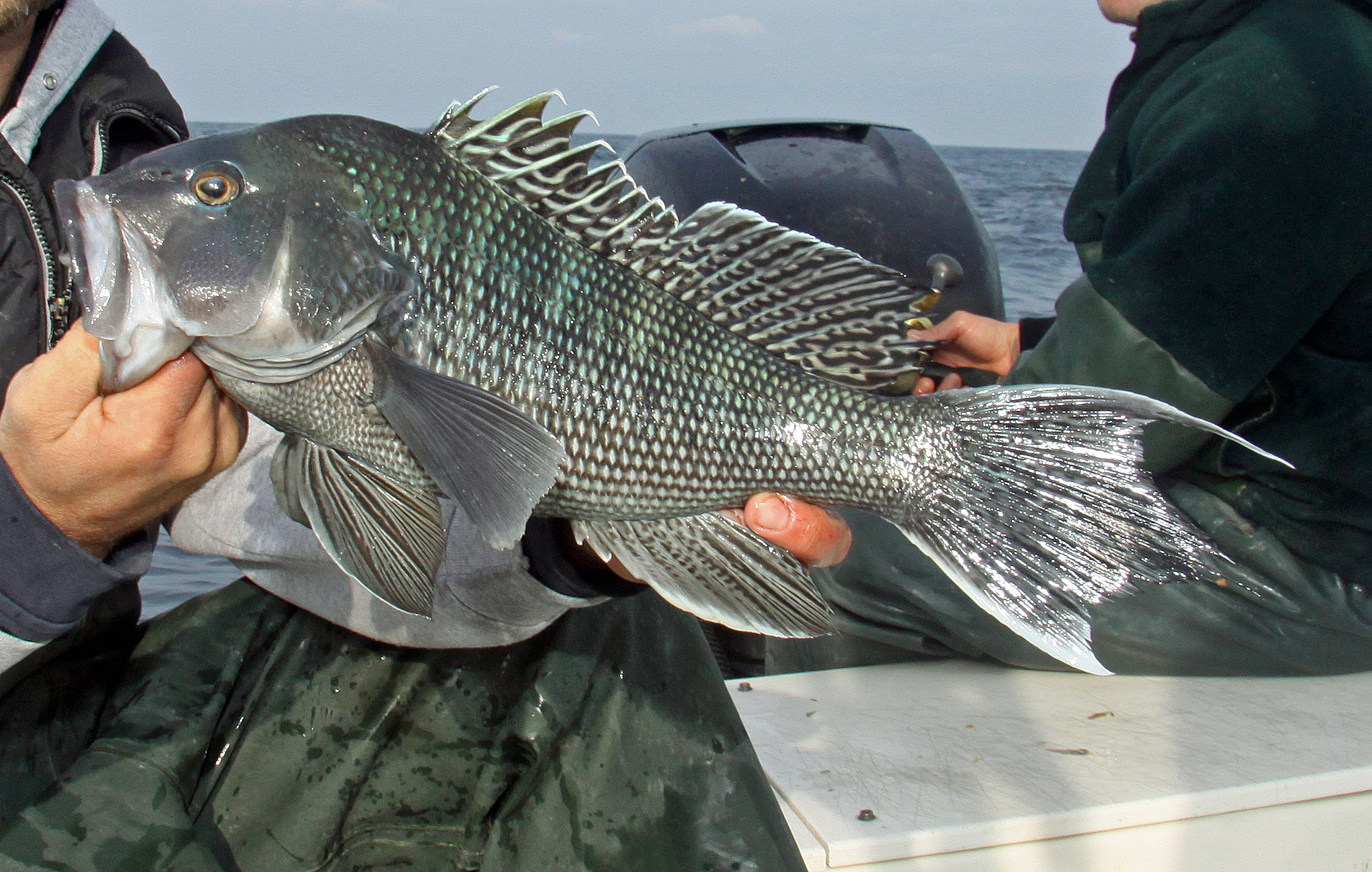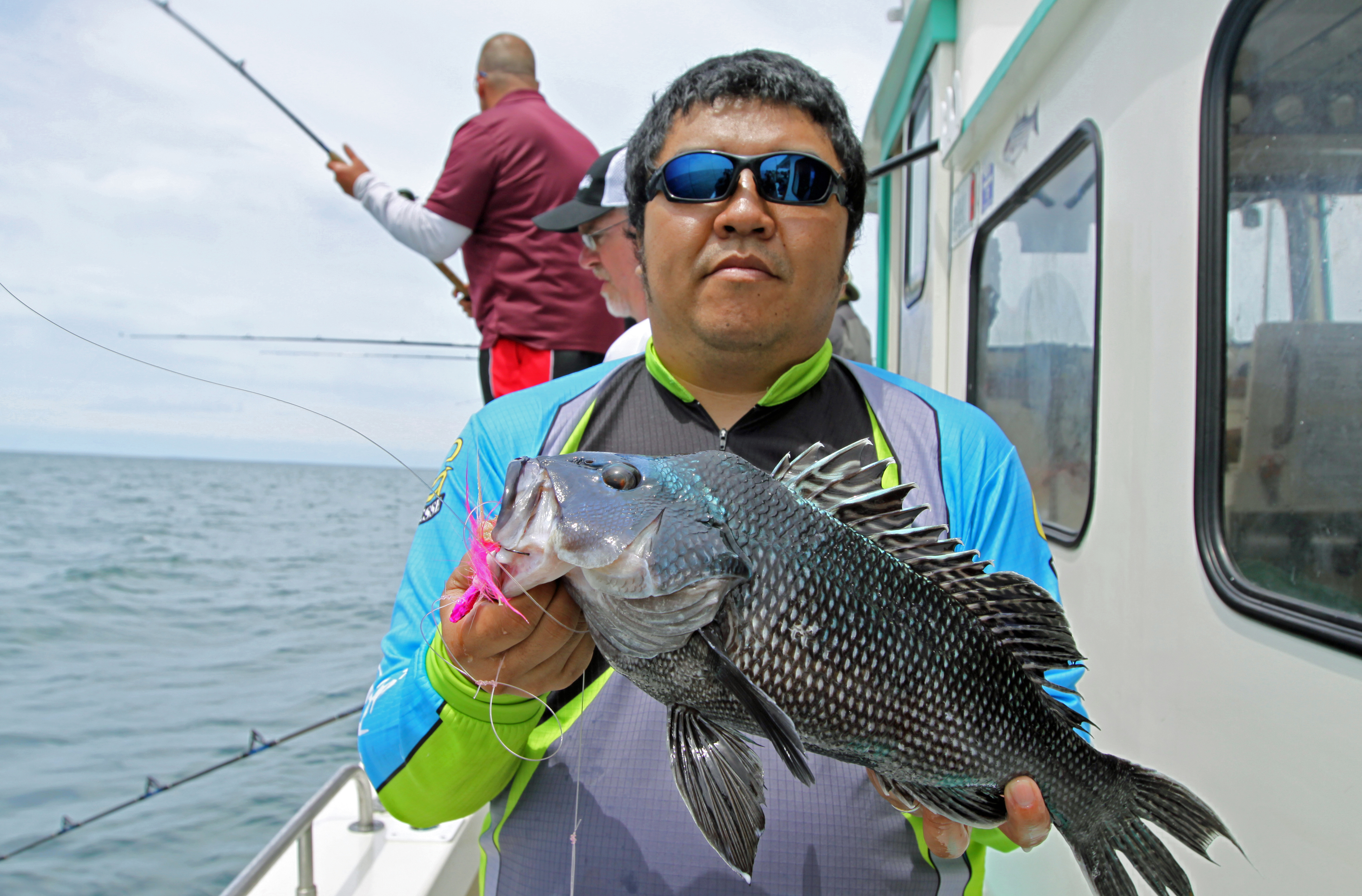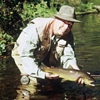JIG AWAY FOR BLACK SEA BASS

Black sea bass are tasty, aggressive and overly abundant these days. Targeting them with jigs makes the game even more fun. Photo by Tom Schlichter.
Anglers looking to both fill the freezer and enjoy some thrills while bottom fishing this time of year need look no further than the tasty and pugnacious black sea bass. During September and October, these structure lovers stack up on just about every mussel hump, rock pile and wreck between Rhode Island and New Jersey. Find them in relatively shallow water of 60 feet or less and you can easily dance a jig to bring hard strikes, knob-headed lunkers and huge smiles all around. Whether fishing from private, charter or open boats, the action is first rate and will usually see a selection of other bottoms species like porgy, fluke, triggerfish and even an occasional small cod. Toss in a roving bluefish or striper for good measure and you’ve got a mixed-bag day that’s hard to beat. (Be sure to check local regulations to see which species are and are not in season.)
JIGS VS. BAIT
Most Northeast and Mid-Atlantic anglers have given sea bass fishing a try at some point. Usually, the modis operani centers around squid or clams for bait fished at anchor. Slip your offerings on a high-low rig, lower it to the bottom around a potential piece of structure and hold on as the bites ensue. With a little bit of experience, you’ll be able to gain a feel, lift at just the right moment, and haul up enough fish for dinner. It’s bottom fishing at its most basic and the steady action plus a nice pile of fillets at the end of the day make it ideal for anyone who simply wants to bend a rod.
Jigging, however, can be just as productive and provides a more active approach to catching dinner. It demands total concentration, a developed feel for the bottom and your lure’s action, plus a willingness to experiment with jig types and jigging techniques until you find a combination that works. Jigging also tends to produce bigger fish on average than bait fishing because smaller sea bass are less likely to be hooked on a jig or bucktail, and bragging-sized sea bass that have turned their snouts up at bait can be startled or provoked into striking at the flashy, unpredictable action of a hard-bodied offering. Jigging also works up fewer sea robins, dogfish, skates and bergalls, allowing anglers to concentrate their main target: hump-backed sea biscuits.
STANDARD JIGGING TECHNIQUE

Spro bucktails are especially favored by sea bass sharpies up and down the coast. Here Kazu Nakamura, Assistant General Manager of Spro Bucktails, shows how to get the job done. Photo by Tom Schlichter.
While those with a little jigging experience have an edge at this game, even anglers using a jigging approach for the first time can be successful. The key to getting started is to keep it simple at first. Start with a 6-1/2 to 7-foot rod with a medium-fast action and conventional style reel spooled with 15- to 30-pound test mono or 20-pound test braid. Connect the main line to a small barrel swivel using a Palomar knot and then attach 4 feet of 30- to 40-pound-test mono or fluorocarbon leader. Tie a 3/4- to 2-ounce bucktail jig (Spros are popular) directly to the leader using an improved clinch or Palomar knot and your set up is complete. Alternatively, you can use a small diamond jig, such as an AVA 27 or 47, in place of the bucktail. Either way, sweeten the offering with a slender, 2- to 3-inch pennant of squid or a 3- to 4-inch Berkley Gulp! Alive shrimp hooked once through the head from bottom to top. If using the squid, split the end of the strip to give it more action and to keep it from snagging on the hook during the jigging process.
As for lure color, it is hard to go wrong with a white, pink or chartreuse bucktail and the diamonds work best if you use silver on sunny days and gold when it is overcast outside. The technique is simple, get your line to the bottom, reel up about eight turns at a medium pace, free-spool back down and repeat. Increase or decrease the weight of your lure based on what you need to stay tight to the bottom given the current, wind and drift speed.

Kids love sea bass. Teach them how to jig ’em up and you’ll have a fishing buddy for life. Photo by Tom Schlichter.
SOFT TIDES ARE BEST
When fishing with jigs you’ll want to concentrate your efforts during periods of minimal current. Too quick a drift is the primary enemy as it lifts your line off the bottom so try this at the start or end of a tide, or even during slack water if there is enough wind to push you gently across some scattered structure. Be aware, as you look for typical sea bass structure – reefs, scattered rubble, wrecks or simply hard bottom – that your quarry doesn’t stick tight to structure like a blackfish. It may be on a piece, near a piece or between two pieces. It might be uptide or downtide; there are no hard or fast rules to sea bass positioning so if you don’t get a quick response on your first drift, keep moving.
As for working your jig, this is different than fluke fishing. Quick snaps are the key. Keep your lure tight to the bottom, snap it to life, let it fall, and then snap it again.
In general, you’ll want to pick a calm day when trying this technique. The slower the drift, the easier it is to keep the fishing line as vertical as possible and the jig close to the bottom. If strong winds are pushing the boat too fast, making it difficult to keep the jig down, a sea anchor or even a 5-gallon bucket tied to the boat can help slow the drift.
By Tom Schlichter
Use the LIKE button below to get notifications about new articles in your Facebook news feed!



